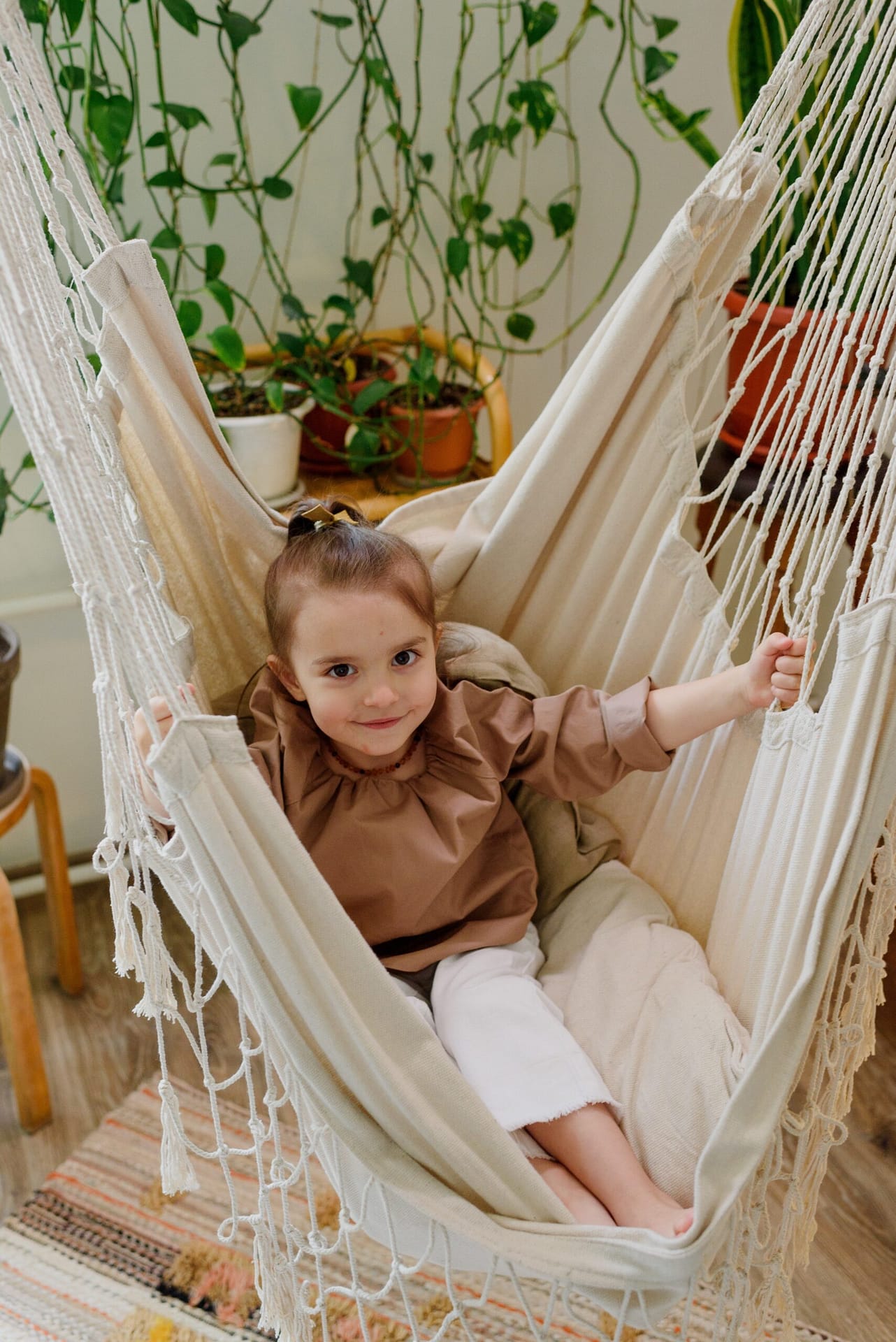Are you good at setting boundaries for yourself?
Most people aren’t great at it, so naturally, when they become parents of strong-willed, independent children, they flounder and ride the struggle bus for a long, long time.
Boundaries – creating, enforcing, and sticking to them – is tricky.
Especially if you’re a people-pleaser, conditioned to say yes to everyone and no to yourself.
Go ahead; I’ll let your mind flood itself with your own examples.
Lord knows we all have them.
Because creating, implementing, and adhering to boundaries isn’t something we’re born understanding how to do.
It’s a learned skill, and many don’t master it.
But because you’re reading this, I know you know how important boundaries are.
The only problem is you don’t know how to create limits, stick to them, or both.
Let alone create age-appropriate boundaries for your child.
So if you’re wondering how to set boundaries with your child without punishment or rewards, you’re in the right place.
Keep reading to learn how to talk to your child about boundaries and ways you can implement them.
This way, you and your child will feel more connected, and you’ll have more peace over their unwanted behavior.
Why are boundaries important?
Boundaries are important because they are personal rules of engagement.
They’re often unspoken, not verbalized, compounding the complexity of every interaction you have.
Because every person’s boundaries are different, and some may not have firm boundaries – or any boundaries – at all.
Navigating others’ boundaries and upholding your own is quite challenging for adults, let alone young children.
Boundaries are more than just an unspoken rulebook for interacting with others. It’s a personal safety net and emotional and physical regulator.
It’s a personal safety net in that boundaries protect you from unwanted and unpleasant behavior.
It’s an emotional regulator in that they protect your headspace from energy-suckers.
It’s a physical regulator in that it gives you the power to know that you’re in charge of your own body, period.
Having healthy boundaries protects you from what doesn’t serve you, and it’s an essential tool for navigating the world and taking care of yourself.
Children need and deserve to learn this skill to help them become champions for themselves.
And you deserve to keep your physical and emotional sanity.
How to talk to your child about boundaries
Before you go off setting boundaries consistently, it’s helpful to talk with your child about boundaries.
You know, like, for starters, using the word itself.
“I’m going to start working hard on being more consistent with my boundaries with everybody, which are my rules for what behavior I’ll accept from others.”
You can also point out examples you see in tv, movies, books, and real life.
For example, we love Bluey in this house.
In the episode “Yoga Ball” (S1E16), Bingo eventually speaks up for herself (with help from mom Chilli) and tells her dad, Bandit, that she doesn’t like how rough he’s playing with her.
She says she’ll bark when the playing gets too rough with Dad, and he’ll stop.
Another thing you can do with your child is to practice setting and responding to boundaries by making up scenarios.
A common boundary-crossing issue is giving family members hugs when the child doesn’t want to.
You can help them recognize when they may need to set a boundary (“Your tummy might feel like butterflies are inside, or a bunch of wiggly worms that want to get out”) and how to do it (“You can put your hand up and say no thank you”).
By talking with your child about boundaries, you can help them practice adhering to others’ limitations and setting their own
You are, after all, one of the most influential figures in your child’s life.
How to set boundaries with your child in a healthy way
Setting a limit with anybody takes practice.
And with your child, it might take the most.
Therefore give yourself grace as you practice mastering – and modeling – this skill.
Here’s your cheat sheet for setting boundaries with young children:
- tell them you’re practicing
- stay firm with the things that aren’t negotiable
- have flexibility with the negotiables (and ask for their input)
- explain why you’re setting this limit
- be consistent
- use consequences, not punishments and rewards
1. Tell them you’re practicing setting boundaries
Children are little sponges. They soak up almost anything we say (even the stuff under our breath). So no matter your child’s age, you can begin to talk to them about boundaries.
Let them know you want to try something new, something they may not be used to (you are truly sticking to your guns).
Because you value your relationship and want to nurture this skill for yourself.
Most importantly, you also want to teach them to set and respect boundaries.
For example, the next time your child wants a second cupcake for dessert, and you say no, it’s one only; you can say that you will start implementing some boundaries.
You could say something like, “I’ve been thinking about how I handle some situations with you. I’m going to start practicing being more consistent with these rules.”
Or “I want to try something different. I know before I would let you occasionally have another cupcake with dessert, but from now on, it’s only one sweet after dinner.”
2. Stay firm with the non-negotiables
One of the best ways to practice setting boundaries with your child is to tackle the non-negotiable ones first.
The limits don’t have much wiggle room, like an 8 o’clock bedtime.
Or not jumping on mommy when she’s hurting.
Or not yelling in someone’s face during a disagreement.
For example, bath time at 7:00 is non-negotiable.
You are turning that bath on whether your child is ready.
This creates predictability and fosters a safe and secure environment for your mini-me.
3. Yet have some flexibility
On the other side of sticking to your guns is flexibility with the boundaries you enforce.
It may seem counterproductive, but giving a little wiggle room sometimes is good.
Surely you’ve heard “choose your battles wisely now” as a parent for the umpteenth time.
So how do you demonstrate flexibility in the limits you set for your child without undoing the hard work on the non-negotiables?
Well, you’ll need to choose your battles here.
Let’s say you have a 45-minute video game limit for your child.
A timer is set, and they are supposed to turn off the game when it goes off.
But that timer goes off, and your child keeps playing.
Should you bicker with them that it needs to be shut off now (and probably both end up upset)?
Or should you help your child learn to manage their time?
Well, that’s up to you.
I find myself in this situation often with Wade.
He sets his timers, and he knows the final timer indicates that he needs to wrap it up.
Sometimes I’ll need to remind him to log off, and other times he’ll turn it off on his own – usually within 5 minutes of it going off.
Allowing flexibility in the boundaries you set for your child helps them see that not everything in the world is black or white.
Like, how easy is it for you to shut off what you’re doing when you’re enraptured in it?
4. Answer the "why"
What questions do kids ask the most? I’ll betcha it’s “why.”
Kids always want to know why something is how it is or why we said “no” to their request. Whatever that is.
So, tell them!
“I said no to jumping on my bed because I need quiet and stillness right now.”
“A lot of sugar gives you energy at first, but you’ll feel extra tired later. I want you to feel good when we go out to meet your cousins later.”
“Why? Because it’s not what we came here for, and I’m only getting what’s on this list.”
Use your child’s curiosity as a tool into other’s reasoning. They don’t have to “get it,” but they must respect it.
Just like an adult honoring another adult’s boundary.
5. Be consistent
Consistency is king when it comes to boundary setting.
Don’t flip-flop.
At least, don’t flip-flop all the time (ah, the balance of consistency and flexibility).
Stay firm.
Grounded.
Calm.
Kids often need rules and limits repeated to them because repetition builds their brain development.
Remember this the next time your blood begins to boil from them not listening to the limits you’ve set.
6. Use consequence, not punishment, and reward
Avoid rewards and punishments as this emphasizes and reinforces their behavior.
Remember that boundaries are about what you will do because of their behavior.
You can, however, still implement consequences, as those aren’t punishments.
Consequences are the natural result of behavior.
Consequences teach accountability. Ownership of actions.
Punishment makes a person feel bad about their behavior. It is often done via shame, guilt-tripping, taking away possessions, etc.
Punishment also doesn’t teach accountability as well as consequences do.
But what about rewards?
Should you give your child a reward if they obey your boundary?
Do they earn a gold star if they follow the rules?
Research shows that rewards backfire.
While rewards may help you achieve the desired behavior in your child at the moment, they really decrease your child’s inner motivation to do good.
This is because it naturally feels good to please somebody (in this sense, respect their boundaries), so getting externally rewarded for something you already inwardly get rewarded for – the whole thing becomes less desirable.
The term for this is overjustification or the overjustification effect.
Your takeaway
Learning how to set boundaries with your child takes patience and practice.
Because setting limits for your child is challenging when you have little practice using them.
Not to mention if you’ve been a pushover parent lately. Or a threatening, bribing, evil-feeling monster.
Nobody likes getting their boundaries crossed, and children need to learn how to respect others’ limits.
Start setting boundaries with your child by talking about your limitations.
Clue them in on why these limits are this way, and if they’re negotiable, flexible boundaries, invite their input on what the limit should be.
For example, time spent on a video game, reading before bed, not jumping on you without your permission, etc.
Boundaries are wholly necessary for relationships.
It’s a shame that most of us did not know how to implement them during childhood and thus found ourselves at a loss once parenthood entered the picture.
Boundaries work. Boundaries save peace. Boundaries give structure and safety.
They save the day.
But remember to bend ’em too.
How do you deal with boundary-setting with your kiddo?
Do you feel more like a strict-ass or a pushover at times?
Hah…I’ll raise my hand for both.






